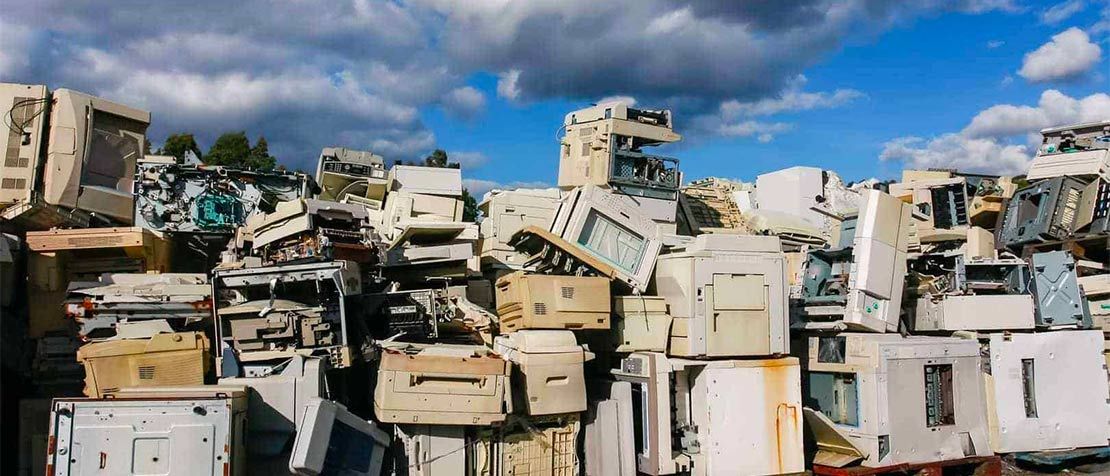
Let’s rethink e-waste, and pave the way to a waste-free economy for electronics
The global consumption of smart phones and other electronic devices is increasing, and bringing benefits to many people in areas as wide-ranging as health, education, finance and commerce.
But there is a downside: the world is now seeing a growing tsunami of electronic waste.
A new report launched today by the United Nations E-waste Coalition indicates that the global economy generates approximately 50 million tonnes of e-waste every year. This is a huge amount, representing the mass of all commercial aircraft ever produced.
Unfortunately, only a small proportion, around 20 per cent, of this is waste formally recycled. This results in global health and environmental risks, as well as the unnecessary loss of scarce and valuable natural materials.
The proper management of e-waste yields not just one, but multiple gains for development.
But businesses, policy-makers, and the public can turn this global challenge around. The rewards will be significant. Indeed, the proper management of e-waste yields not just one, but multiple gains for development.
Here are some top takeaways from the report.
Many health and environmental risks
The global amount of e-waste discarded every year weighs the equivalent of more than 125,000 jumbo jets.
Of this total amount, 40 million tonnes of e-waste are discarded in landfill, burned or illegally traded and treated in a sub-standard way every year.

E-waste can contain substances that are hazardous to human health if not dealt with properly, including mercury, cadmium and lead, which can pollute water sources and food supply chains.
Electronic goods also have an impact on climate change: manufacturing a tonne of laptops emits up to 10 tonnes of CO2.
Vulnerable workers in the informal economy
Today, the total number of people working informally in the global e-waste sector is unknown.
But according to ILO, in Nigeria up to 100,000 people are thought to be working in the informal e-waste sector, while in China that number is thought to be 690,000.
Substandard working conditions in the informal sector lead to adult and child workers, as well as their families, being exposed to many toxic substances.
A waste of scarce resources
Since e-waste contains many high-value and scarce materials, such as gold, platinum, and cobalt, improper recycling of discarded electronics results in a significant loss of scarce and valuable raw materials, and puts unnecessary pressure on our limited natural resources.

The problem is only expected to get worse. By 2050, the volume of e-waste, in the worst-case scenario, could top 120 million tonnes annually.
But there is good news.
Better legislation and new partnerships
ITU has been raising awareness and guiding efforts to reduce and rethink e-waste for several years now. Today, approximately 4.8 billion people or 66% of the world’s population are now covered by e-waste legislation. That’s a large increase from just 44% in 2014.
More and more actors have recently joined the fold to fight e-waste. The United Nations E-waste Coalition, launched last year, includes a long and growing list of UN organisations such as ITU, UNEP, and ILO. The E-waste Coalition is supported by the private sector, as well as the World Economic Forum, and the World Business Council for Sustainable Development.
Together, the United Nations E-waste Coalition is proposing creative solutions to promote a circular economy for electronics where waste is designed out of the system.
New solutions for waste-free electronicsThe report launched by the United Nations E-waste Coalition stresses that products need to be designed for reuse, durability and eventually safe recycling.
This can be achieved through different business models including products as a service (instead of a one-off transaction, the business model shifts to one of an ongoing service, which incentivizes the manufacturer to ensure that all the resources are used optimally over a device’s lifecycle), sharing of assets, life extension and finally recycling.
Although e-waste is growing, technologies from Internet of Things (IoT) to cloud computing show a huge potential and could lead to the “dematerialization” of the electronics industry as well as better product tracking, take-back and recycling.
Decent jobs recycling electronics
In many countries, e-waste recycling operations are expanding.
New and inclusive business models for managing e-waste are being established.
These have already generated thousands of decent jobs in safe conditions.
If the electronics sector is supported with the right policy mix and managed in the right way, it could lead to the creation of millions of decent jobs worldwide.
Additional economic benefits and a cleaner environment
The material value of e-waste alone is worth US$ 62.5 billion (€55 billion) a year, more than the GDP of most countries in the world. Extending the life of products and re-using components prevents this unnecessary waste and brings economic benefits.
A system in which all discarded products are collected and then the materials or components reintegrated into new ones will reduce the need for new raw materials, waste disposal and energy, while creating economic growth, new ‘green’ jobs, and business opportunities.
Furthermore, harvesting the resources from used electronics produces substantially less carbon-dioxide emissions than mining in the earth’s crust.
This report contains an important positive message: if we play it right, we can seize the development opportunities of e-waste. But more and more actors from the public and private sectors are needed to join this effort, as great things can happen when a wide variety of specialized individuals and groups are mobilized to work together towards a common vision. Together, with newly created partnerships like the United Nations E-waste Coalition, we can transform waste into wealth, and deliver development benefits to all.

Ms. Vanessa Gray is the Head of the Division for Least Developed Countries (LDCs), Small Island Developing States (SIDS) and Emergency Telecommunications within the ITU Telecommunication Development Bureau (BDT).
